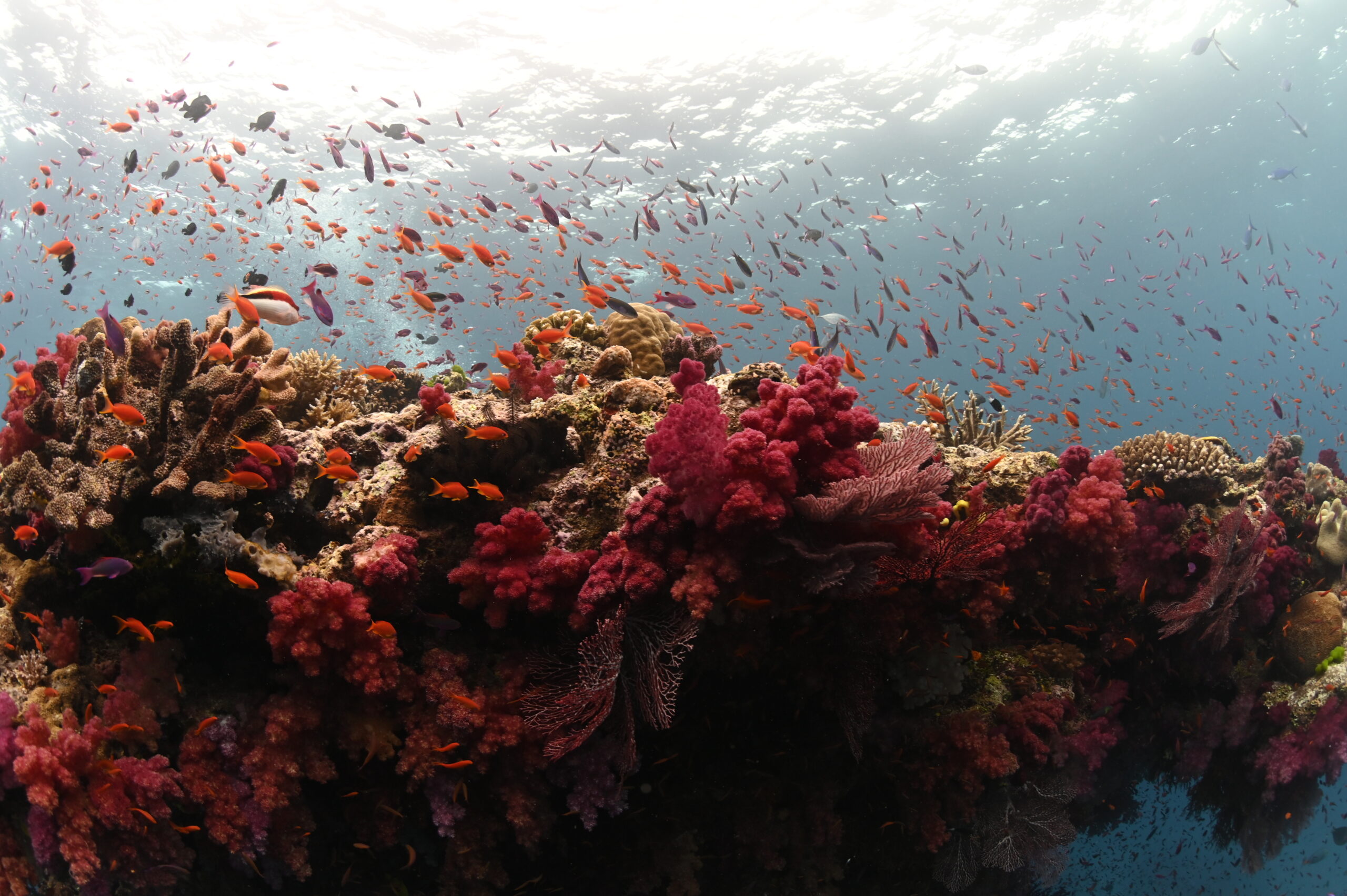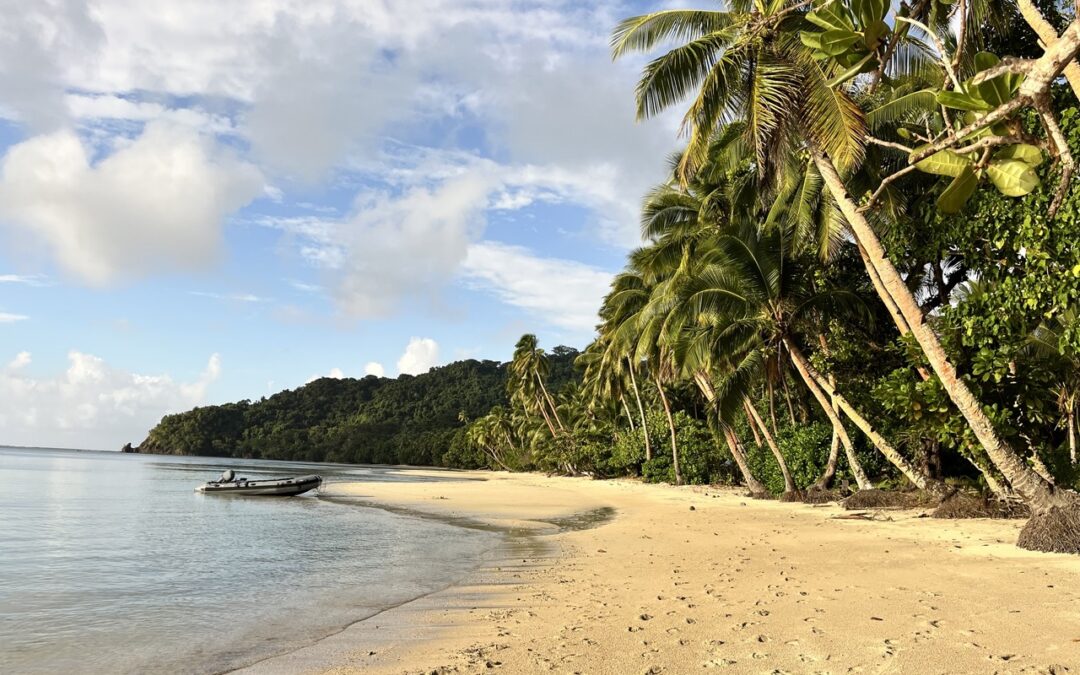10 days after departing from Tahiti, Seahawk finally arrived in Viti Levu, Fiji’s biggest island and Seahawk’s base for the first 5 weeks in the country.
Port Denarau, located on the west side of the island and near the city of Nadi, is an oasis filled with resorts, shops, and restaurants for the tourists that visit, as well as the start line for those wishing to cruise further into some of the 300 islands that belong to Fiji.
It was here where Seahawk started her 7-week voyage around the archipelago. An expedition that showed us the many contrasts of a country that manages to hold on to its traditions and culture, while communities on the different islands of the vast archipelago take pride in their unique history and land.
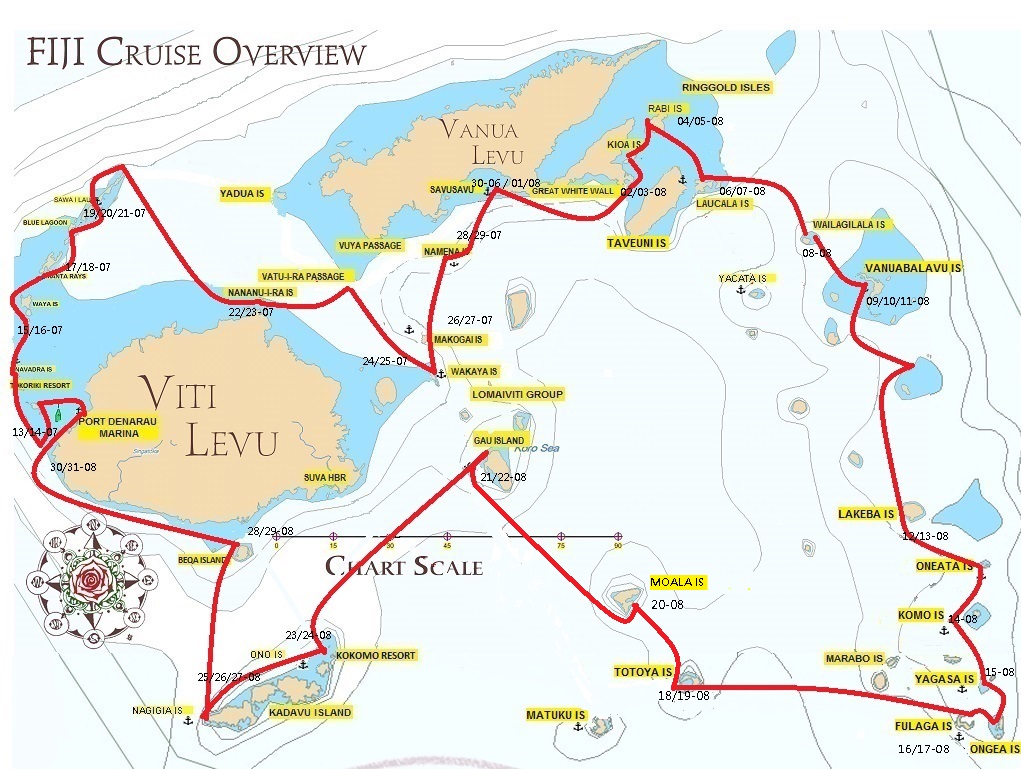
To help navigate our journey we were joined by Valu Tamanivalu, an experienced local guide who has worked on yachts for many years. Valu started his career in the 80s as a dive instructor and has great knowledge of the best diving spots across the country. This made him the perfect fit for Seahawk. Valu was also our guide and mentor throughout our discovery of Fijian culture. His years of experience traveling the country, getting to know many of the villages and cultural idiosyncrasies made him the perfect liaison. Coming from Kadavu island, Valu is also the chief of his village, Nacamoto; our neighbor island village welcomes were to say the least very regal.
The first ten days of our trip were characterized by a relaxed cruising around the Yasawa and Mamanuca Islands, where guests on Seahawk enjoyed sightseeing, hiking and even tasting Kava for the first time. Kava is a traditional drink in Fiji made by using the crushed root of the Kava plant.
The drink is often shared during a kava ceremony; participants sit in a circle around the kava bowl (Tanoa) as the ceremony leader prepares the beverage and serves it one by one. Drinking Kava is not only a social ritual to bond with the community. Kava also gives the drinkers a mild sedative feeling, one that makes their mouths go numb and their thoughts slow down. Our first Kava ceremony was conducted by Valu on the boat, as he taught us all about this tradition and the meaning it has for Fijians.
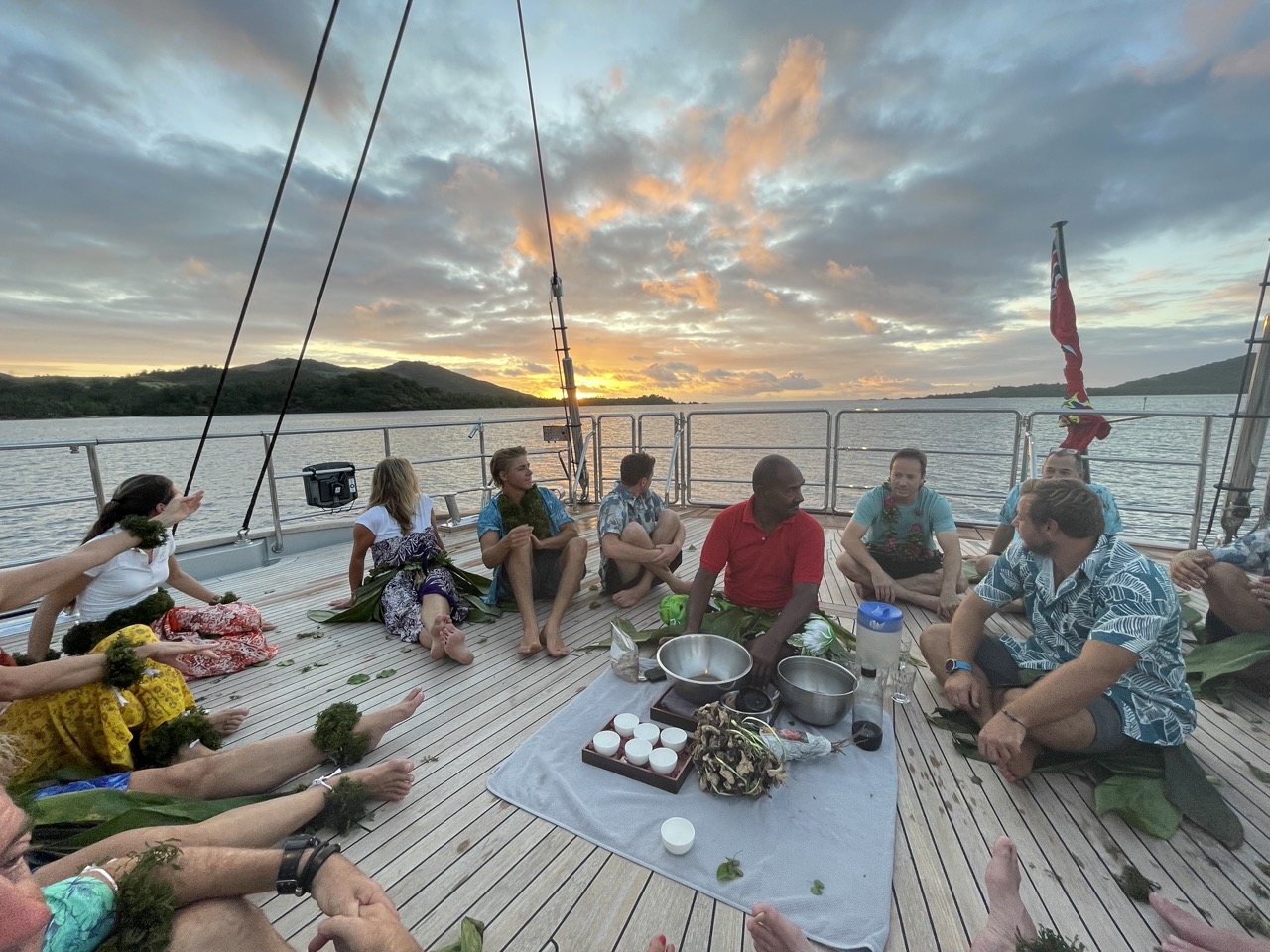
As we made our way through the central and southwest side of the archipelago, we encountered beautiful natural wonders, such as the Sawa-I-Lau caves in East Yasawa, or the white sandy beach on Monuriki island (A.K.A Castaway Island), where we attended a traditional dancing ceremony. Caught up in the moment, some of the guests acted out the famous Tom Hanks scene where his character, Chuck Noland, is trying to stab fish with a spear.
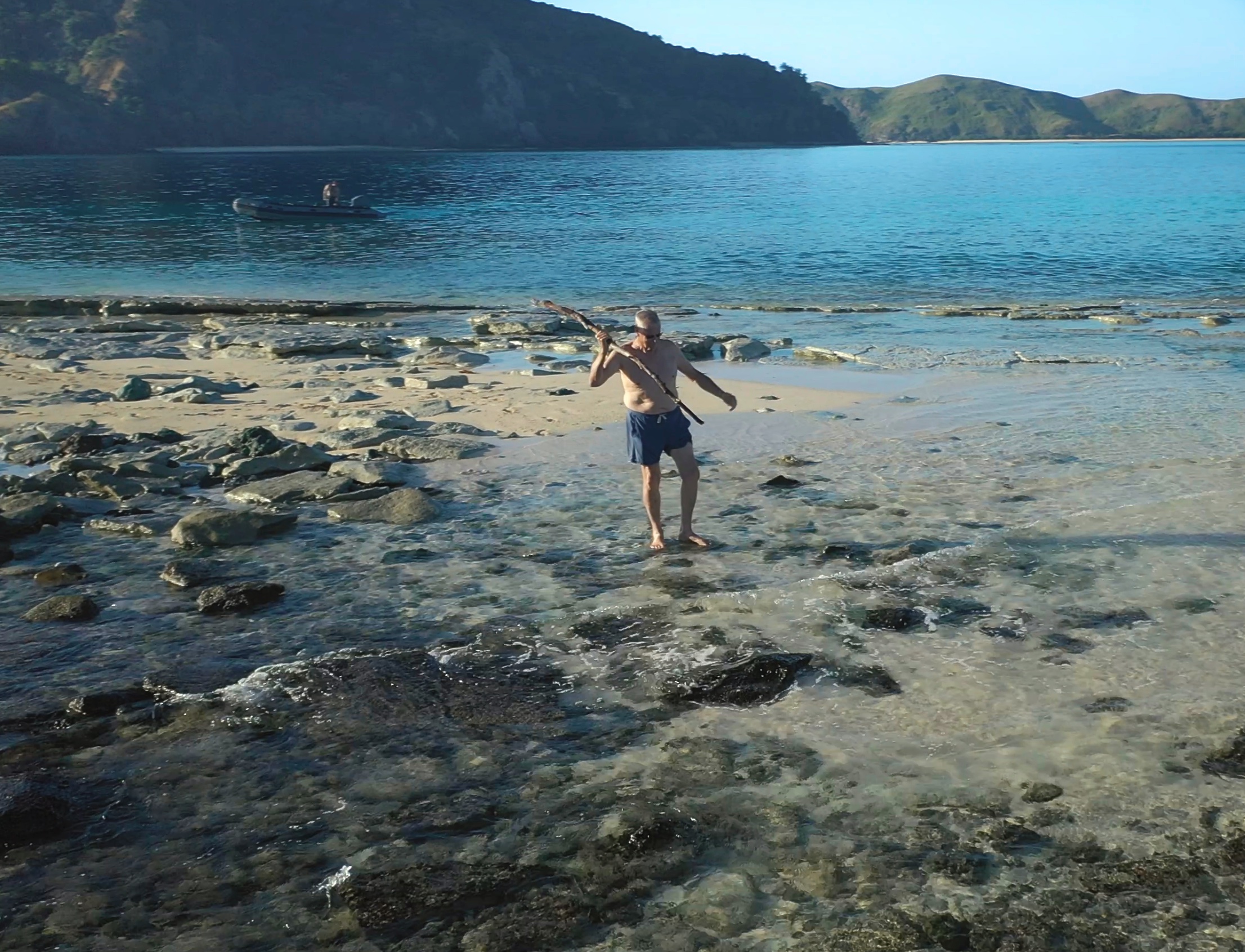
Moving north within the Fiji archipelago, we switched gear into action mode. Vanua Levu, Fiji’s second biggest island, offered stunning natural beauty with spectacular vistas, exotic flora, and even medicinal mud hot springs. It was in Savusavu, one of the larger towns on the island, where we met Sharon, an American expatriate who owns a guest house and also conducts personalized tours around the area. A knowledgeable naturalist guide, she taught us about the local flora and its medicinal properties, and also took us on a journey to find waterfalls and hot springs tucked away in the forest.
Sharon moved to Fiji some 20 years ago and raised her two sons there. They have grown up in the male-dominated environment that Fiji has, but with an extremely talented (and strong-willed) mother who has succeeded in developing a business and meshed into the community. Quite an achievement.
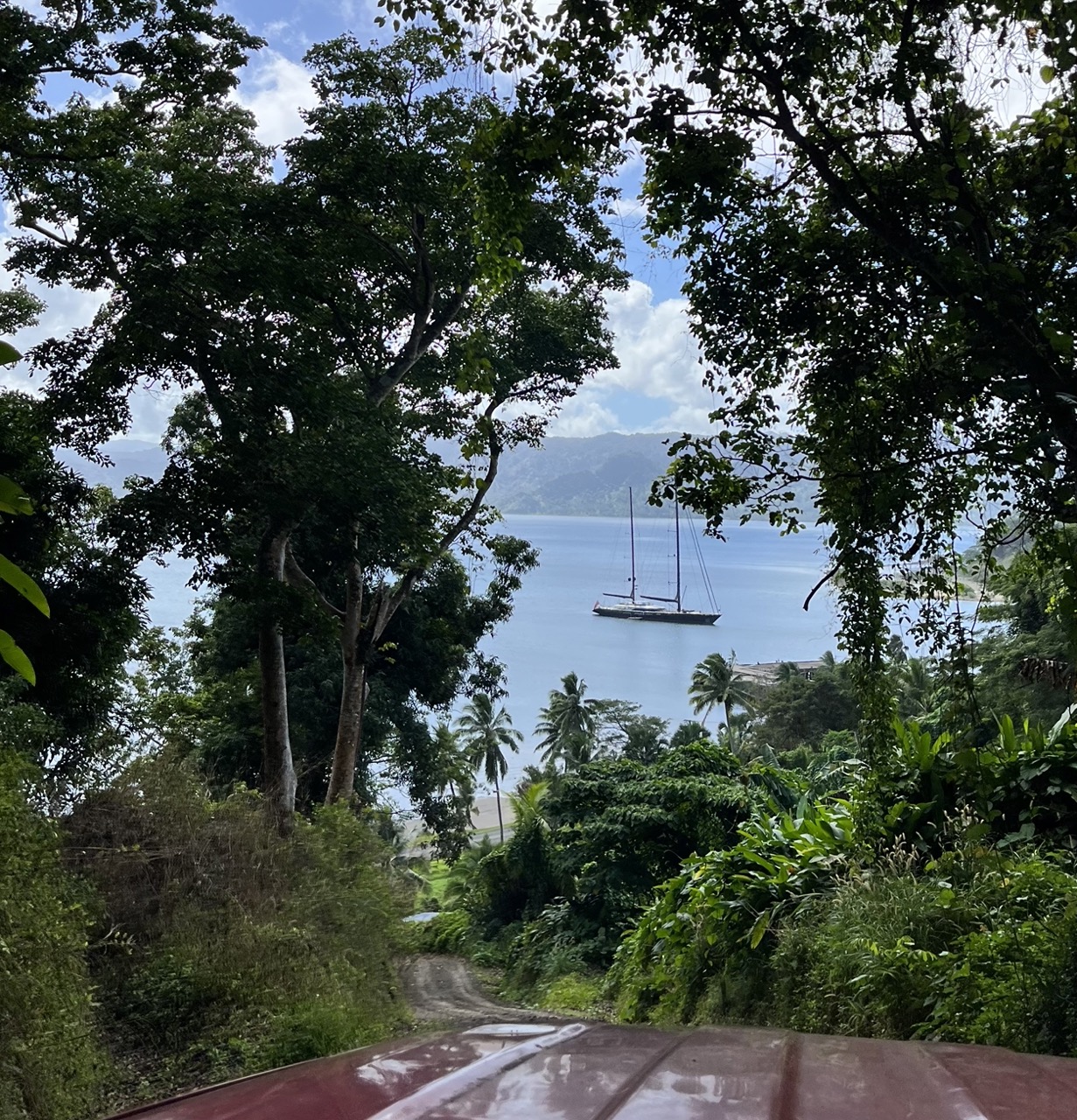
As Seahawk kept sailing east, the natural beauty of the islands was once again fully revealed. The island of Taveuni, notorious for being home to Fiji’s most spectacular waterfalls, was stunning. The owners and crew enjoyed a full day of exploration, trekking through the lush rainforest on the island, and eventually enjoying a delicious swim in the pristine lagoons located at the bottom of Taveuni falls.
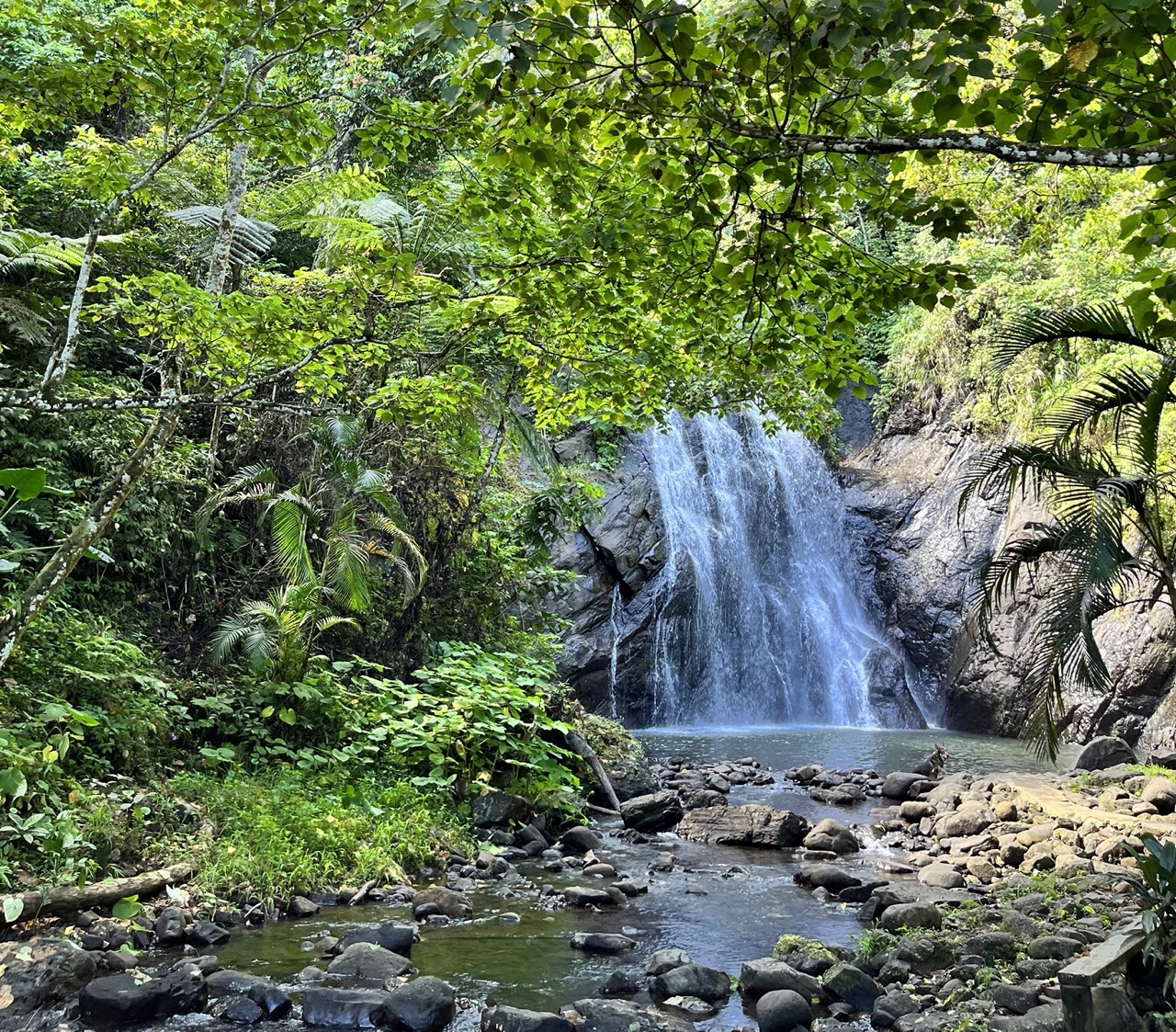
Our last stop before venturing further east was in Rabi island, located north of Taveuni, where Seahawk’s owners switched roles and lead the crew on a discovery dive as part of their Divemaster training. With its amazing topography and abundant fish life, the dive site turned out to be a nice surprise. Hence, an impromptu additional day’s stay was added to the agenda.
Rabi was a good opportunity for everyone to brush up on their diving skills, as we spent the days that followed focused on diving and exploring some of Fiji’s most magnificent dive sites within the Lau group of islands.
The next leg of the trip was to be focused on a new science mission, this time supporting scientists working to survey remote areas of the country for marine life while also installing a monitoring system to obtain data on sea temperature. The data collected from the monitor equipment ultimately feeds into computer models designed to help better understand ocean fluctuations and climate change.
Click here to keep reading about our expedition in the Lau islands and the Lau Seascape Initiative.
